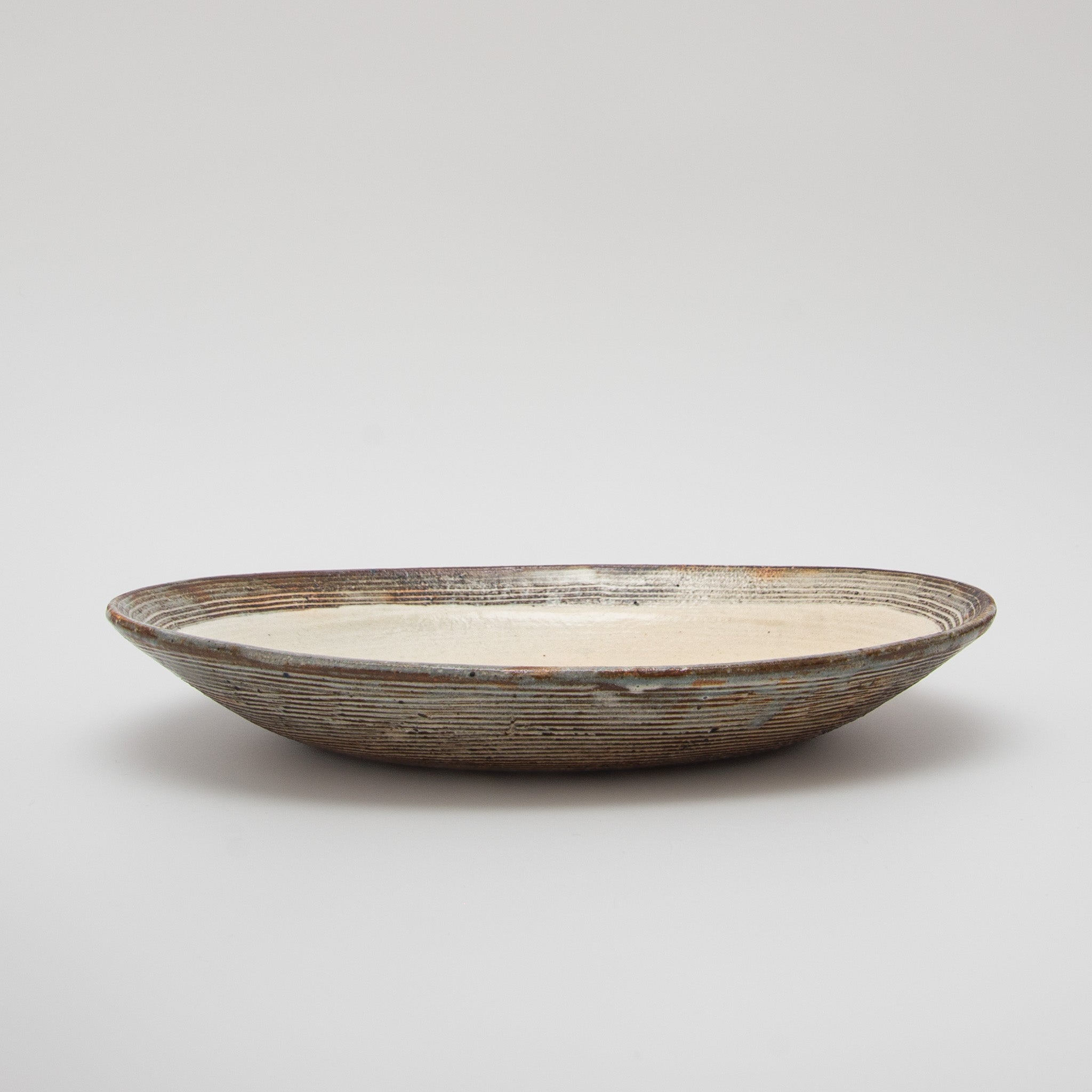
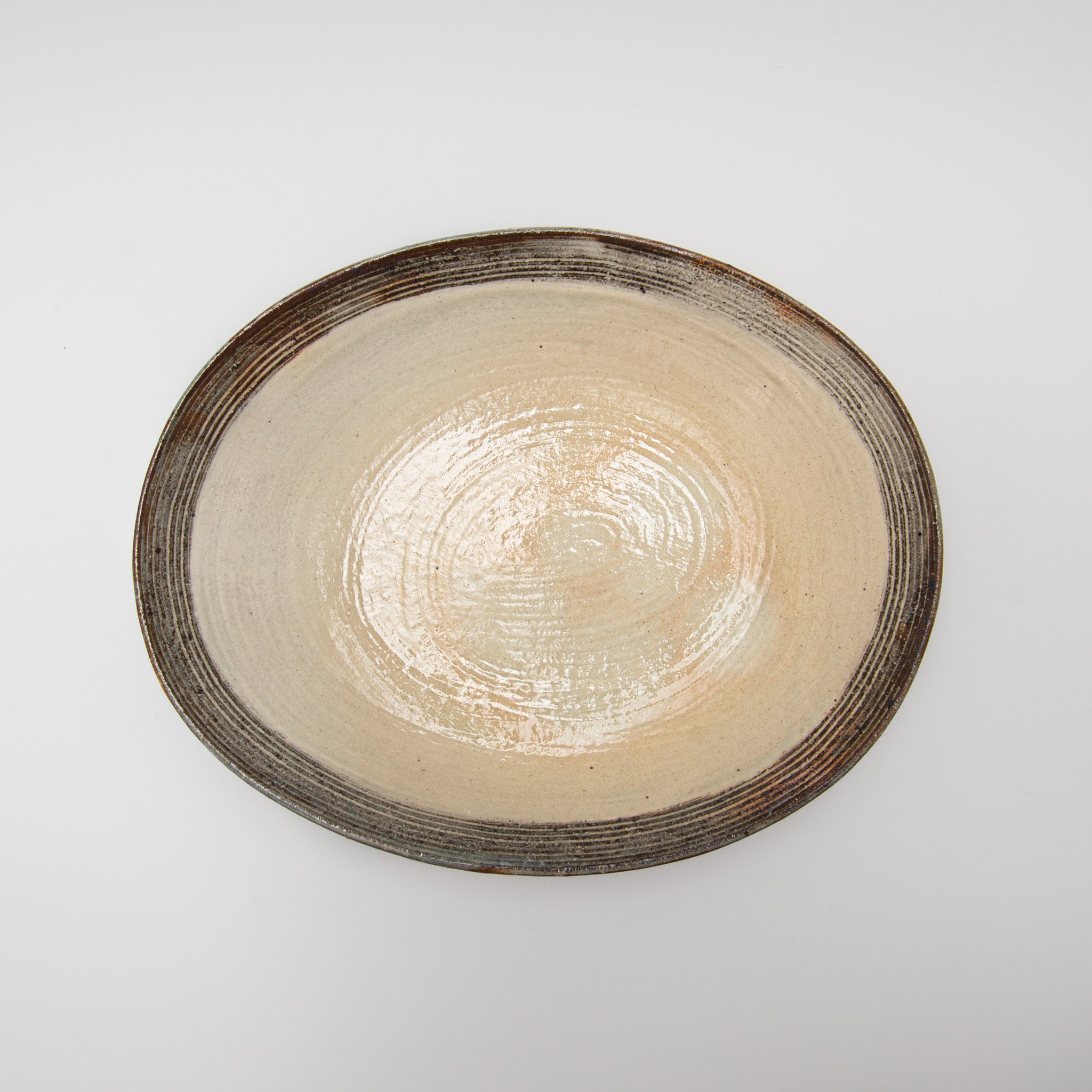
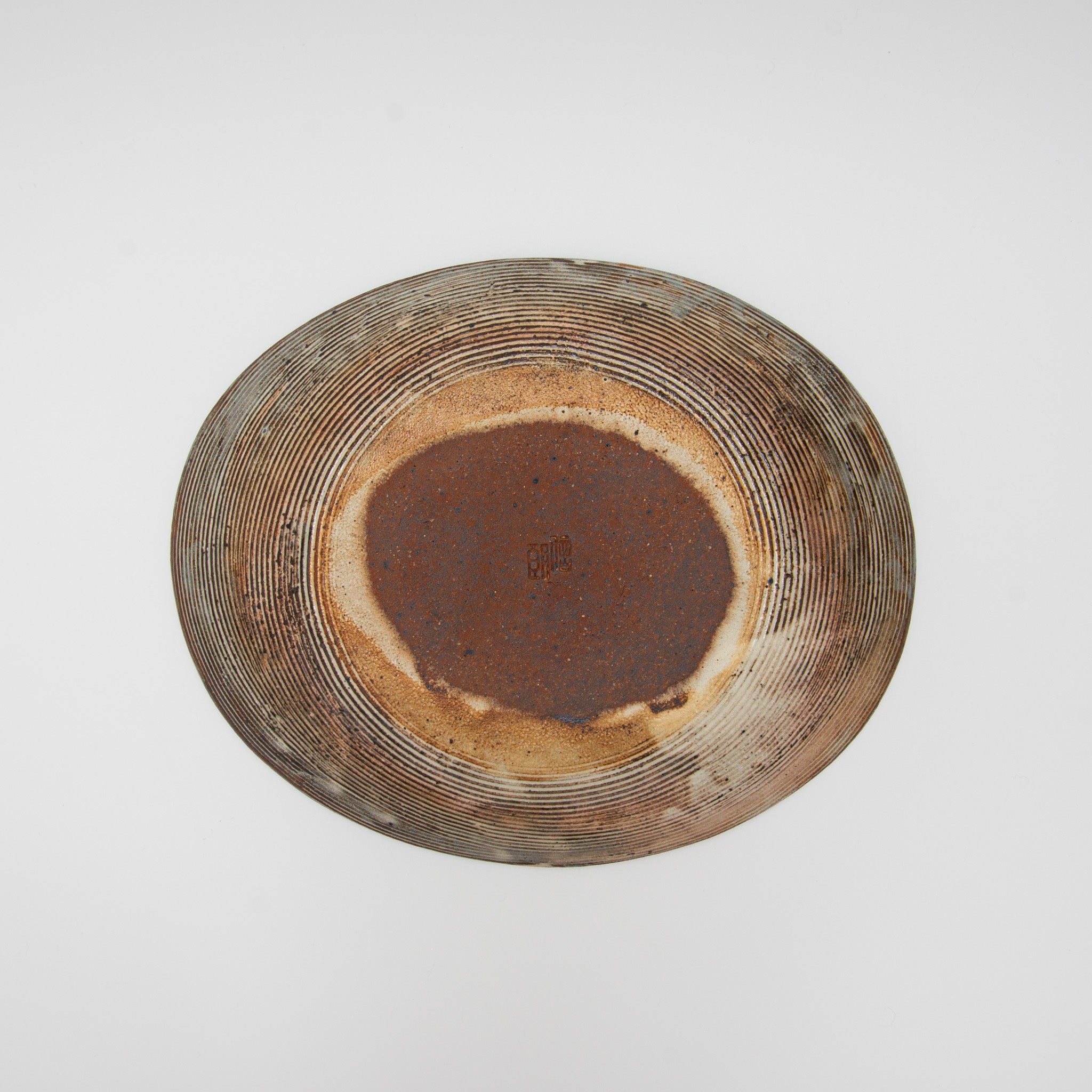
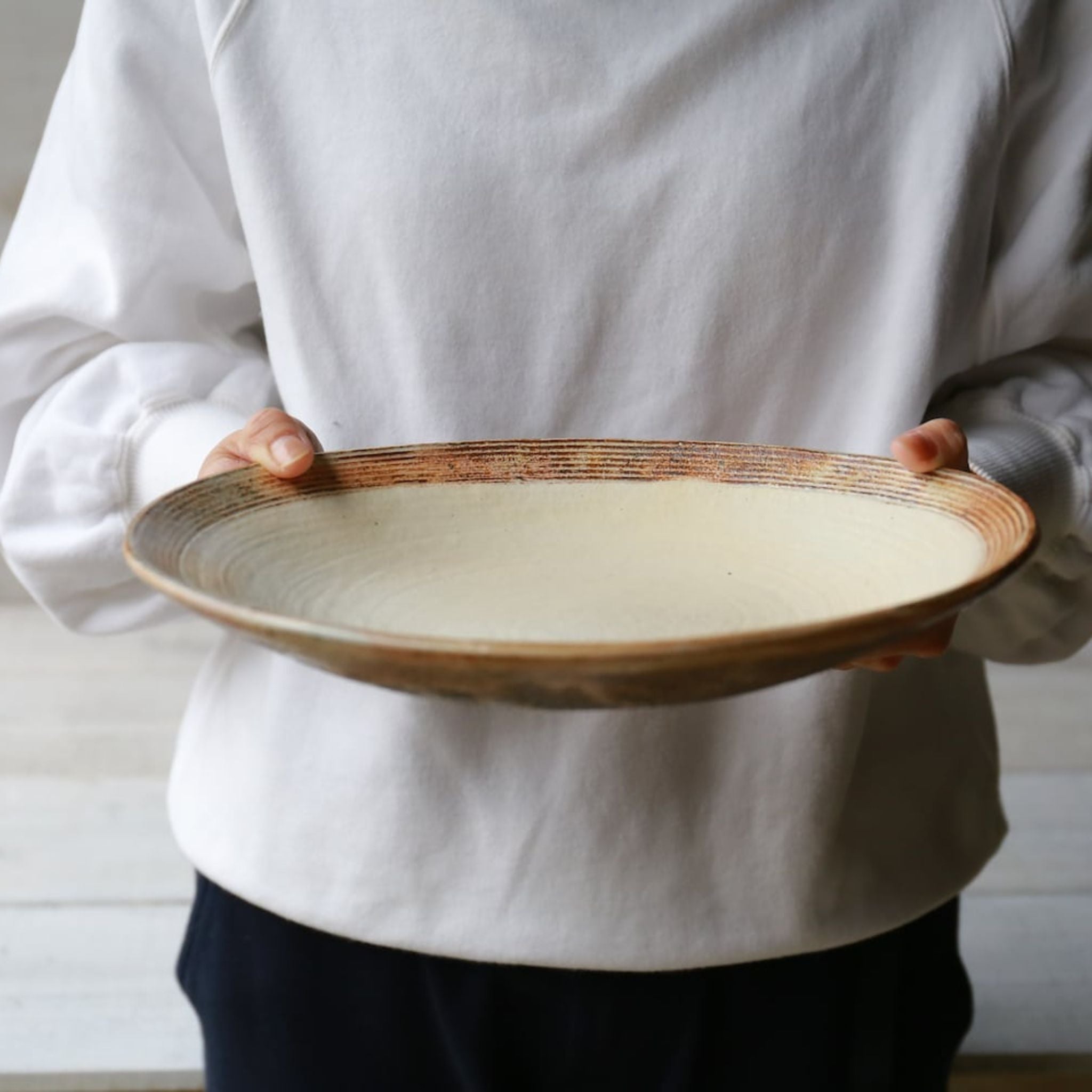
Shigaraki Ware Fuchiara Yokobori Oval Deep Plate
Shigaraki ware has a long tradition of being fired in noborigama (climbing kilns) and anagama (wood-fired kilns) at high temperatures over extended periods. Each piece is shaped, dried, and fired by artisans who carefully read the flow of flame, humidity, and the character of the clay—creating work in harmony with nature. No two pieces are ever exactly alike.
The coloured areas are created by applying coarse clay and carving it with a comb. The slightly rough texture of the carved lines and the warm earthy tones beautifully complement the soft white kohiki glaze. The colour expression varies depending on the thickness of the white slip, the position in the kiln, and even the season—ranging from deep brown to greyish hues. As natural materials are used, small iron specks, glaze drips, or tiny pinholes may appear, adding to the individuality of each piece. In the design of this piece, Fuchiara Yokobori loosely translates to “deep, cut edged horizontal lines”.
The deep plate can be used as a small serving platter for shared dishes or for individual main meals. . Its gently flared shape and moderate depth make it versatile and easy to use.
Details
Care
Choose options




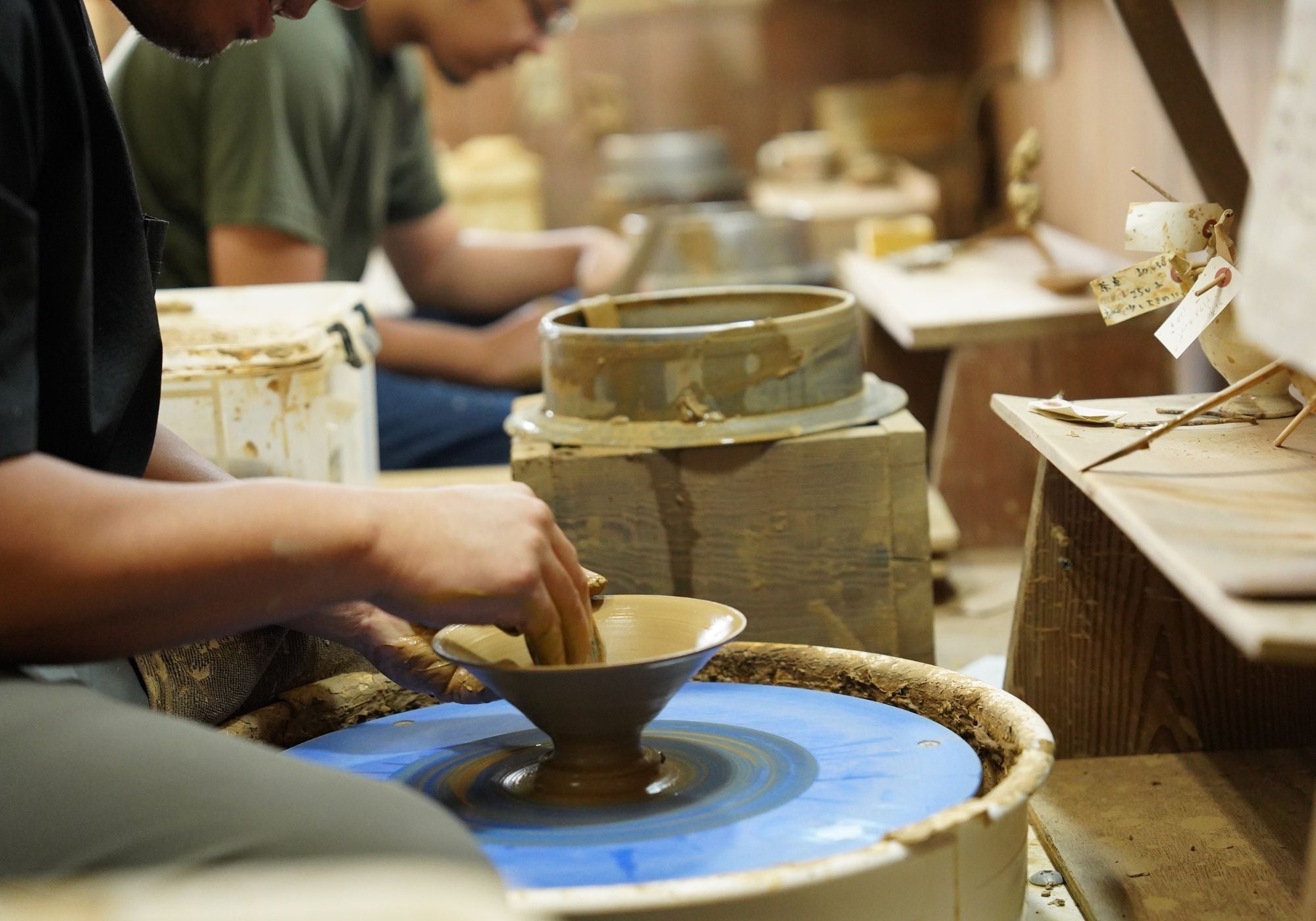
Artisan
Furutani Pottery Studio
Rooted in the traditions of Shigaraki ware, Furutani Pottery Studio creates vessels that harmonize timeless craftsmanship with modern living. Using an original blend of iron-rich red clay coated with white slip, each piece is twice-fired at a relatively low temperature to achieve a soft, matte kohiki finish. With gentle forms, subtle white textures, and the natural character of Shigaraki clay, their works embody a quiet elegance designed to enrich everyday life.
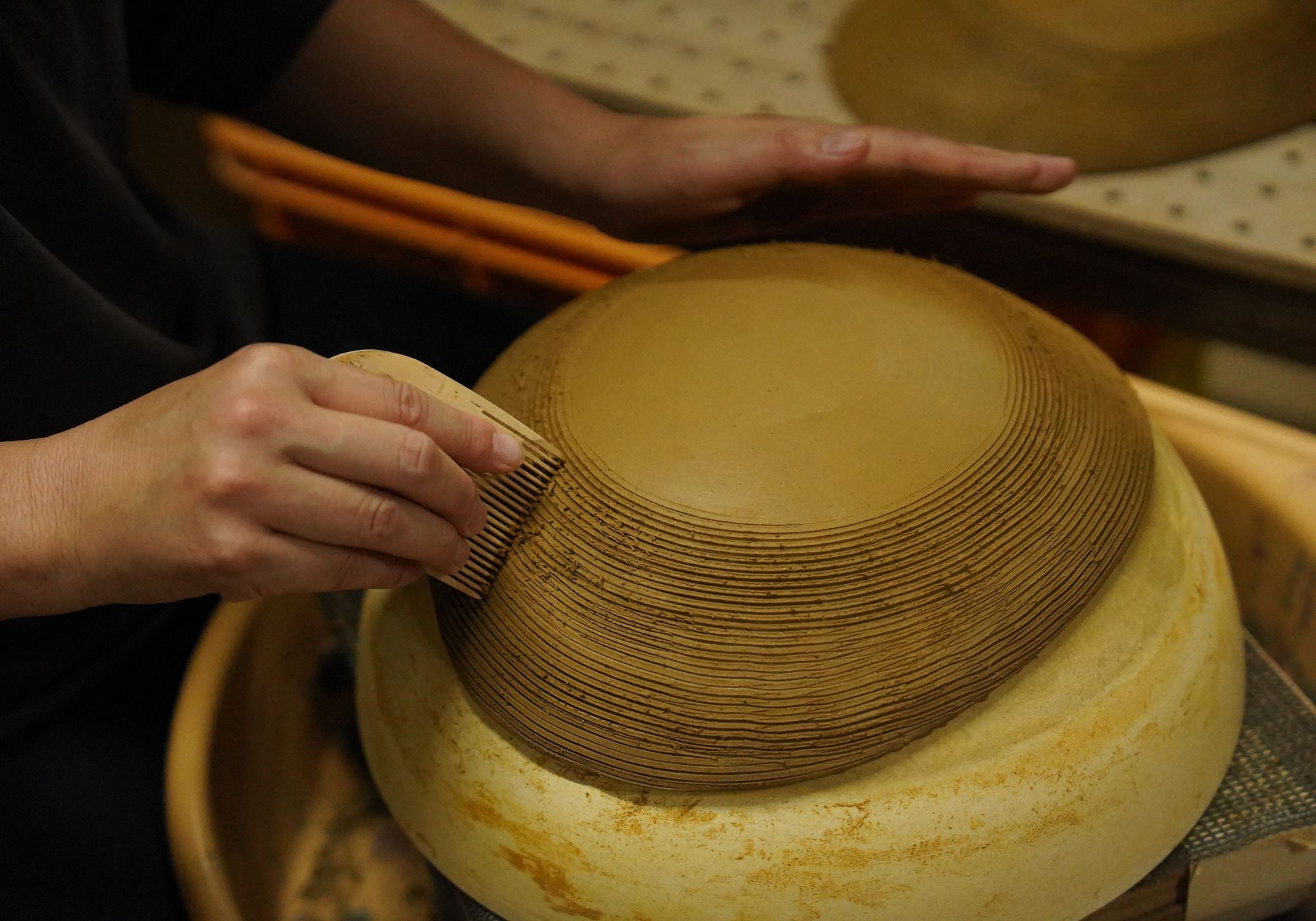
Mastery
Shigaraki Ware
Originating over 750 years ago in the Kamakura period, Shigaraki ware first emerged as utilitarian vessels such as tea jars and storage pots. By the Muromachi period, it became deeply intertwined with Japan’s tea ceremony culture, celebrated for its rustic warmth and natural beauty. The local clay of Shigaraki, rich in feldspar and quartz, produces distinctive natural markings — soft freckles (kannyu) and stone bursts (ishihaze) — during firing. Ash falling in the kiln melts into a natural glass-like bidoro glaze, while reddish hi-iro tones emerge from the play of flame and heat. Shigaraki’s unique charm lies in these natural transformations — an art of earth and fire that celebrates imperfection and the quiet beauty of clay itself.